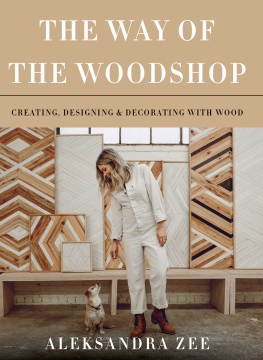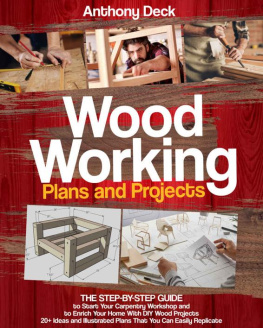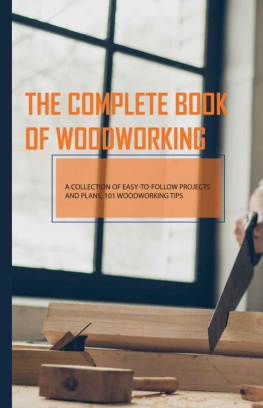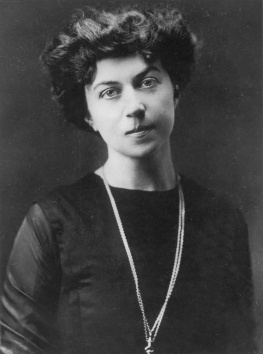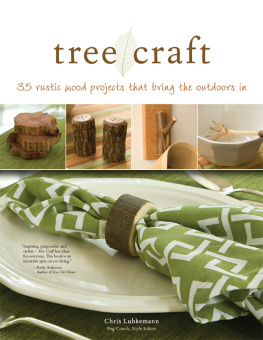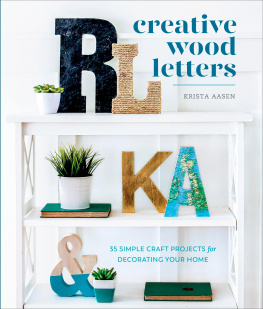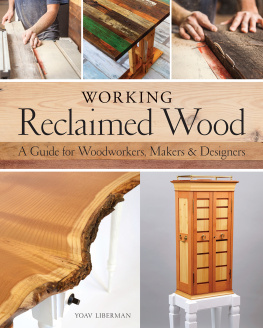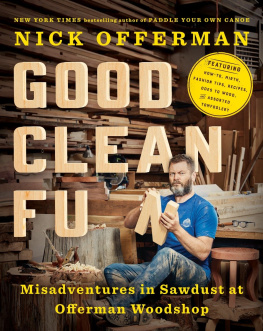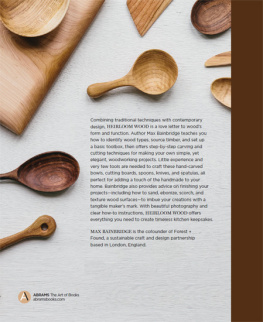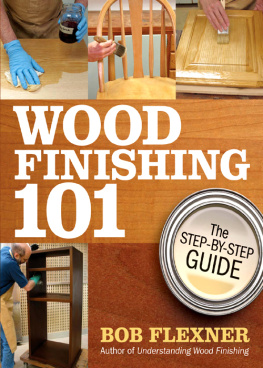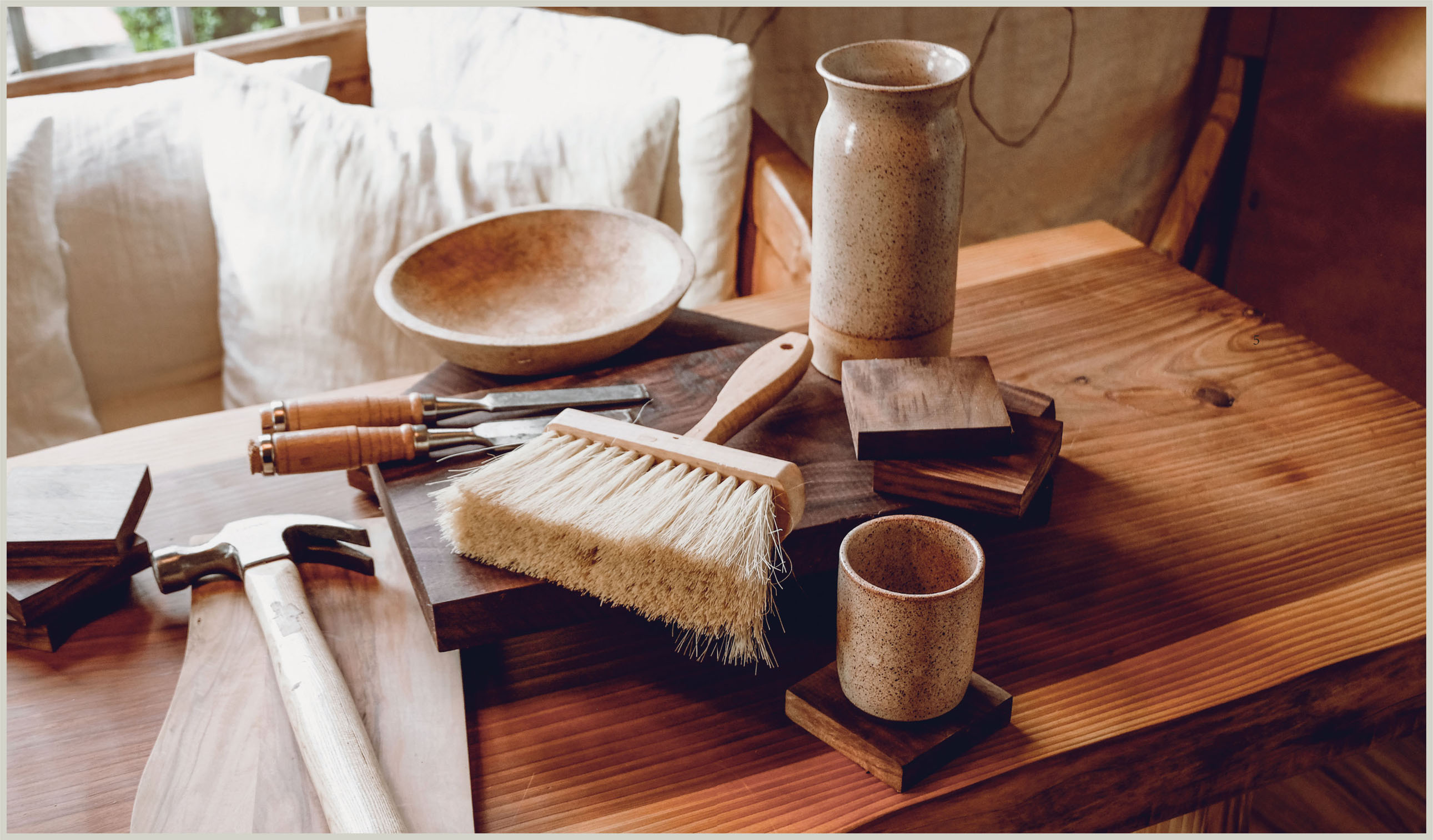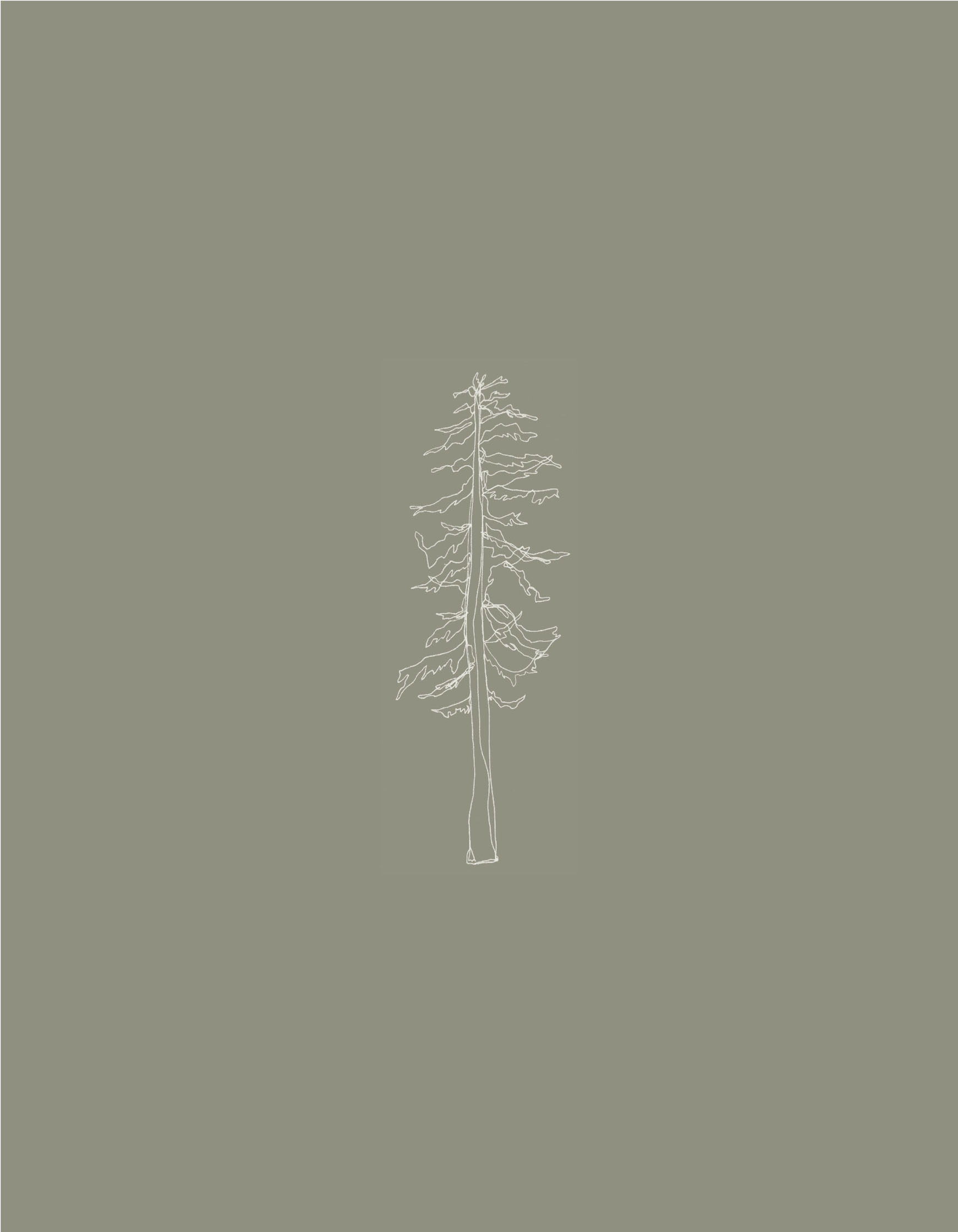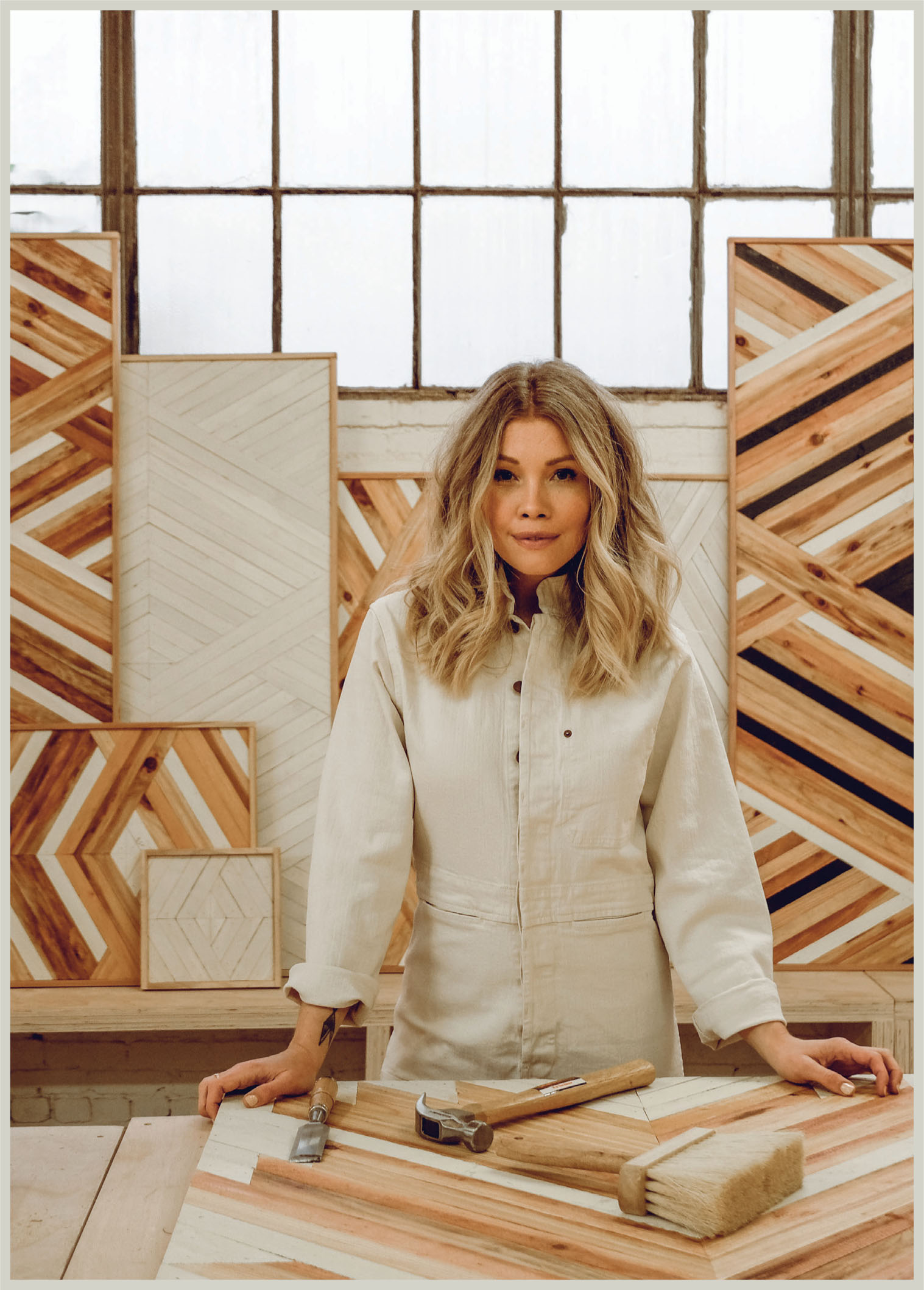Table of Contents
Guide
Australia
HarperCollins Publishers Australia Pty. Ltd.
Level 13, 201 Elizabeth Street
Sydney, NSW 2000, Australia
www.harpercollins.com.au
Canada
HarperCollins Publishers Ltd
Bay Adelaide Centre, East Tower
22 Adelaide Street West, 41st Floor
Toronto, Ontario, M5H 4E3
www.harpercollins.ca
India
HarperCollins India
A 75, Sector 57
Noida
Uttar Pradesh 201 301
www.harpercollins.co.in
New Zealand
HarperCollins Publishers New Zealand
Unit D1, 63 Apollo Drive
Rosedale 0632
Auckland, New Zealand
www.harpercollins.co.nz
United Kingdom
HarperCollins Publishers Ltd.
1 London Bridge Street
London SE1 9GF, UK
www.harpercollins.co.uk
United States
HarperCollins Publishers Inc.
195 Broadway
New York, NY 10007
www.harpercollins.com
THIS BOOK IS DEDICATED TO YOU, THE READER.
MAY IT IGNITE YOUR CREATIVITY AND INSPIRE YOU TO
FIND BEAUTY IN THE EBB AND FLOW. I MAY NOT KNOW
YOU, OR MAYBE I DO; THESE PAGES ARE FOR YOU.
Contents
I have always loved working with my hands. Whenever I am about to start a new project, I experience a mouthwatering, almost tangible craving. Its been this way since I was a child, whether gathering materials for forts or drawing elaborate chalk murals on my driveway. When I am working with my hands, its like the world slows down and I become fully present. Everything stops, the autopilot of creativity kicks in, and a flow begins. To me, making is an act of self-care, because it forces me to take a break from the fast-paced world and to return to myself.
As that little girl drawing chalk murals, I never imagined that I would one day be making a living with my hands as a woodworker. As an art student in college, I dreamed of following in the footsteps of greats like Matisse and Picasso and creating art that was completely unique and original. I wasnt much of a painter, but I tried. And through my experimentation I learned that creative failure is an important part of the artistic journey.
Everything changed when I discovered visual installation art. In a nutshell, installation is a three-dimensional art form that transforms the way we see a space. I fell in love with installation art, spending my spare time dumpster diving for materials for my next project. After college, armed with a degree in fine arts, I interviewed for a junior creative position at Anthropologie, and I got the job. As a visual display coordinator, I would be working on window displays and in-store installations. I packed my bags and moved from my small oceanfront hometown of Dana Point, California, to the Bay Area to work for Anthro.
The job at Anthropologie was like boot camp. We built everything from scratch for those installations, in a studio with every imaginable material at our fingertips. The job was sink or swim: After a brief training session where I was taught the basicshow to properly execute projects and how to use tools safelyI was on my own. Dont know how to sew? No biggie. I was a quick learner. That was my attitude, and I applied it to all sorts of new skills: knotting macram, dyeing fabric, building tables and headboards, or whatever else was needed. Working with wood quickly became my absolute favorite part of the job. This was also when I met my friend and mentor, Katie Gong, a third-generation woodworker from a family of carpenters, who took me under her wing. As her apprentice, I soaked up her wood wisdom like a sponge. When I was at the wood bench with Katie, I felt like I was home. I had found my calling.
Ten years later, and after several daring leaps (and restaurant jobs to supplement my income), I can officially call myself a working artist. Its not always as glamorous as it may seem. Beyond the inspiration process and the labor of fabricating and putting together pieces, there is a lot of grunt work behind the scenes. Emails, planning, conference calls, supply shopping. While Id love to be in the studio every day creating, there are a lot of other important parts of running a business, which may be less fulfilling. But one of the big perks of my job is that I get to make my own schedule and every day is different. And its all mine. A living, breathing business that emerged straight from my heart.
This book will introduce you to the art of working with your hands, and it will show you how to create some gorgeous projects with wood. Its a field guide filled with projects for all skill levels, from absolute beginner to advanced. My intention is to help you gradually build your woodworkers knowledge and confidence, from sourcing lumber, to learning the basics of power tools, to decorating your home. I often teach workshops out of my shop in Oakland, California, and this is a part of my job that I deeply love. In fact, its the reason that I wrote this book. There is nothing more meaningful to me than sharing the knowledge that I have gained over the years with my students and watching their excitement as they dive deep into a new project. This book, like my workshops, is meant to teach you practical skills and to guide you through your first projects with wood. But beyond teaching you how to make your first gorgeous cutting board or bench, I also hope that this book will take you a step further on your journey, leading you to nurture your creative flow and to find inspiration all around youin the woodshop and far beyond.
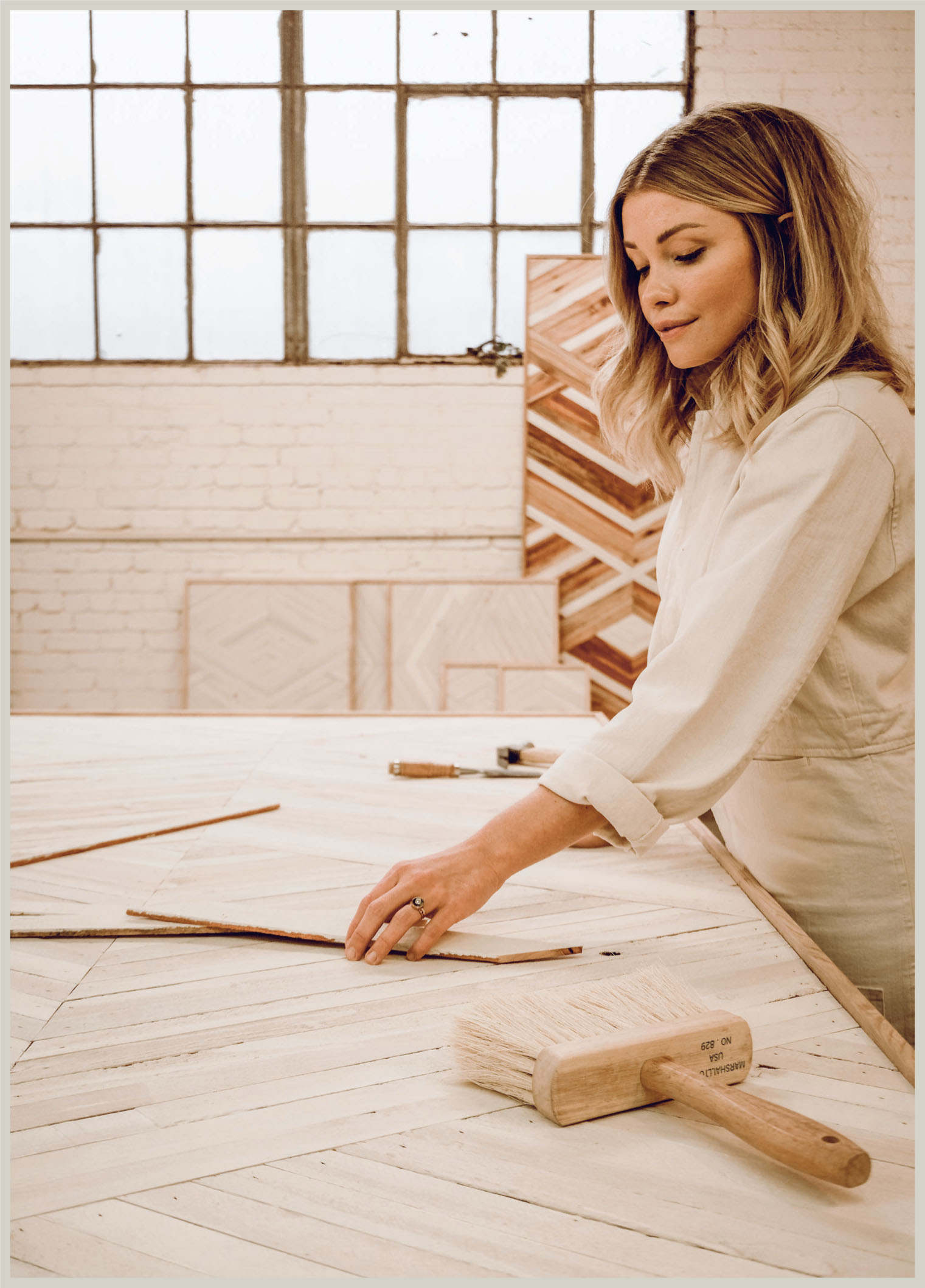
Woodworking has been an essential part of our lives since the very beginning. Early humans used wood, one of natures most beautiful resources, to create instruments for daily life. The first carpenters carved, cut, and finessed this hard yet malleable material to fashion tools and vessels for cooking and eating, to build shelter, and to create the first boats and vehicles for traveling across oceans and continents. Woodworking has a rich history, and it is an art form that reminds me of the human spirit: Its about growing, changing, learning, and expanding. Wood comes from the earth, and in our hands, through development and artistry, we transform it in ways that sustain life and offer beauty to the world.
My love affair with wood, like any relationship, has been a process. In the beginning, I was plagued by fears. Could I muster up the strength to be a confident woman in a field dominated by men? As a novice woodworker, would I be scoffed at for my still-developing skills? Ive had to face these fears, and many more. Ive had to get my hands dirty, just do it, and accept that failure would be an inevitable part of my journey.
One example: On my very first day at Anthropologie, I was tasked with making a sign for the checkout line in one of the stores. I eagerly accepted the assignment, knowing little to nothing about working with wood, aside from building frames for my paintings in college. As for power tools, Id used a sander and a drill, and a small miter saw once but was not a master. That was about it. Still, I was feeling confident until I saw the huge power tool that I was also supposed to use to make this sign: their miter saw. I couldnt even get past turning off the safety. There were no instructions (this was before smartphones), and I was too embarrassed to ask anyone for help, so I pored over the saw, searching in vain for a release button. Eventually, feeling defeated, I rested my arms on the saw, and I felt it give a little. That little bit of pressure popped out the safety pin. Apparently, you just had to push down on the top of the saw handle. Propelled by a combination of laughter and rage, I quickly got to work. After wasting half a day trying to figure out that damn safety, I now had only one hour to cut and create the sign. The end result was terrible. I knew it. My boss knew it. But since it was my first day on the job, I got a lucky pass.
Next page
